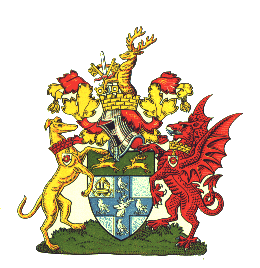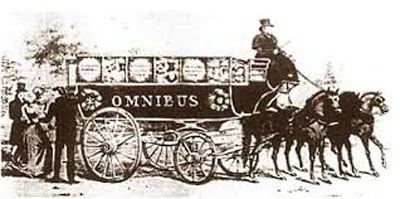



Four Oaks
An exclusive region of Sutton Coldfield which lends its own reputation
to the rest of the town, albeit falsely. Four Oaks borders the Sutton Park and
consists
mainly of private roads and large dwellings. In some cases
Four Oaks must have actually been built on park land
illegally. Residents are very particular and
do not like people
roaming their private roads. Hence the lack of images of the region.
March
2021. Now includes a set of stories relating to the Crown, Four Oaks Common from Yvonne
Moore in 2020.
|
Taken from:
https://sclhrg.org.uk/history-spot/111-articles-401-440/1823-four-oaks-2-409.html
The place known as Four Oaks, as shown on a plan in the Corporation Survey of 1811, consisted of a number of dwellings near what is now the Four Oaks Gate to Sutton Park. (Image below)There had been a settlement here for several centuries, long before the building of Four Oaks Hall by Lord Ffolliott in the 1700s, but it had never amounted to more than a few farm houses and labourer's cottages. Being such a small settlement, it is hardly ever mentioned in its own right, being included as part of the Quarter of Hill and Little Sutton in manorial records. The Parish Register of burials in the seventeenth century names 13 different Four Oaks families, and there were probably more, as most entries do not specify where the deceased person lived. It seems reasonable to suppose that the pattern of houses scattered mainly on the eastern side of the irregular common space or green originated at the time of expansion and assarting in the 13th century, when so much of the rest of Sutton was being brought into cultivation. The earliest written record of the name so far found is in Latin in the court rolls of the Sutton Court Leet of May 1st 1598, when Richard Turner was fined for failing to restore some land which he had ploughed up on the commons near the grain field upon the Coldfield “ultra quattuor quercos” (beyond Four Oaks). The four oak trees for which the place was named were no doubt venerable old trees in 1598, so it seems likely that the four trees marked on the 1811 Survey map were replacements. There was a local tradition that four trees near Hartopp Road were the original four oaks, and the late Norman Evans identified these trees with the ones marked on the 1811 map. In 1979 three of the trees were still alive, the fourth having died of old age, but they stood on a site which had been sold for housing development. Norman campaigned for the trees to be retained, tree preservation orders were issued, and the three trees can still be seen today. |
 |
 Lichfield Road at the beginning of Four Oaks heading towards Mere Green. The building was formerly Stoneleigh Mansion which became the Royal Court Hotel then an apartment block. 
Lichfield Road looking back towards town, the other
direction leads to Mere Green.
|
| Methodist Church Four Oaks |
 |
| Methodist Church Four Oaks |
 |
 |
 |
The Crown
Four Oaks - then and now Images Yvonne Moore |
THEFT OF A BENCH - LICHFIELD MERCURY FRIDAY JULY 17 1885 John Harrison, labourer, 3 Court, 5 House, New Street, Wednesbury, was summoned at the instance of John. Walker, licensed victualler, the Crown Inn, Four Oaks Common, for stealing from the premises of the Crown Inn, one wooden bench, value 3s, on the 30th ult., John Walker stated that two brakes loaded with pleasure seekers stopped on the day named, and the occupants alighted. They were proceeding in the direction of Sutton. It was sometime after the brakes had left that he missed the bench, and from what someone told him, he gave the information to the police. On Thursday, the 9th inst., prisoner brought the bench back and said he was sorry it had happened. Alfred Pointon, greengrocer, Hill Top, West Bromwich, stated he was driving one of the brakes, mentioned by the last witness. He saw the prisoner put the bench into the brake, and believed it was put in to play cards on. He mentioned it to the prisoner, and he said “I will take it back when one of the brakes go back that way”. Police-sergeant Smye said he received information from Mr Walker that a bench had been stolen from his premises, and from what complainant told him, he wrote to the Wednesbury police, and received a reply to say that prisoner denied all knowledge of the bench. On the morning of the 9th inst., the prisoner came down to his station, accompanied by Mr Walker and P.C. Parry, and Mr Walker told him prisoner had brought the bench back. Prisoner stated to witness that two men had come to his house on the night of the 8th inst., and had told him where the bench could be found. They were strangers to him. On account of this statement witness did not lock him up, but a little later on he received a telegram from the Wednesbury police, and on reading this he went to Wednesbury and apprehended the prisoner, who admitted to taking the bench. Prisoner stated that he was driving one of the brakes on the day named. He would have put the bench out but the horses required all his attention. When they arrived at Sutton, he would have returned that way but the party would not allow him, so he was compelled to take it on to Wednesbury but before they arrived there, he missed it. Two men, strangers to him, came and told him where the bench could be found, and he went with them, found it, and started to Sutton with it on his shoulder, walking every step of the way to Police-sergeant Smye’s house. The Bench, taking into consideration that complainant did not want to press charges, imposed a fine of £2, including costs. Info: Yvonne Moore via email. |
 image: Yvonne Moore |
| BIRMINGHAM DAILY POST WEDNESDAY SEPTEMBER 22
1886 - SUTTON COLDFIELD PETTY SESSIONS YESTERDAY BEFORE THE Rector (the
Rev. W. K. R Bedford), Mr H Duncalfe, and Mr E Harold Carter. LICENSING PROSECUTION. – John Walker, licensed victualler, Crown Inn, Four Oaks, Sutton Coldfield, was summoned for selling intoxicating liquors during prohibited hours on Sunday, the 5th inst, Mr. Joseph Ansell defended. – Police-constable Bracebridge stated that on the morning in question he saw three girls with a basket knock at defendant’s door, and heard them ask for a bottle of stout, which was handed to them. After leaving Bracebridge examined the basket, when one of the girls admitted that she had obtained the bottle of stout for her mother, Mrs Goldsby, who was ill. Witness returned to defendant’s house, when Mrs Walker acknowledged that she had given the stout to Mrs Goldsby, who was ill. Witness returned to defendant’s house, when Mrs Walker acknowledged that she had given the stout to Mrs Goldsby, who was ill: but being dubious about the matter she had told the girl not to call again. – Mr Ansell admitted that a technical offence had been committed, explaining that Mrs Goldsby, who was poorly, was of the impression, too prevalent amongst large numbers of people – even among licensed victuallers – that she was entitled as a matter of right to be served with what she required. Her medical attendant had advised her to drink stout, and hence a bottle of stout had been fetched from the defendants. Mr Ansell further alluded to the unblemished character of the defendant, extending over a period of years, and under the circumstances, submitted that the justice of this case would be met with the dismissal of the summons on payment of costs. – The Bench imposed what they termed the nominal fine of 1s and costs. |
 image: Yvonne Moore More images from Yvonne Moore, relating to the Crown stories above.  Brakes were also used to transport shooting parties in estates hence the term shooting brake.   |
Not far from Four Oaks is Reod Lege: first record 957AD; Radley-moor: first record 1783This lost placename, which probably means 'reed clearing', is found in the Charter of (Little) Aston and (Great) Barr of 957 AD. That document set out the boundaries of an early medieval estate which had been granted by an Anglo-Saxon king, Eadred to his minister, Wulfhelm. A stretch of the estate's eastern boundary is described as andlang Bradan Burnan in thaene Broc aet Reod Lege: 'along the Broad Bourne to the Brook at Radley'. The (Broad) Bourne is a stream east of Aldridge; the Brook at Radley runs northwards to cross Blake Street where there was originally a ford. Radley may have been a small settlement or a farm to the north of the ford, possibly on the present site of Aston Wood Golf course. William Hutton mentions Radley Moor in his 1783 History of Birmingham when describing the route of the Roman road through Sutton Park and beyond: Ikenield-street, proceeds through Sutton park, and the remainder of the Coldfield; over Radley-moor; from thence to Wall, a Roman station. The course of the Roman road is now represented by a stretch of Forge Lane at the western end of the golf course. Radley Moor, whose second element, moor means bog or marsh, was probably an area of uncultivated land on the site of the present golf course and beyond. There is a Moor Lane at Footherley to the north. This region surrounds what is now the Aston Woods Golf club. Four Oaks Spraying Machine Company is now on its own page |
http://billdargue.jimdo.com/placenames-gazetteer-a-to-y/places-f/four-oaks/
http://users.powernet.co.uk/bold/Gene/mapsresearch.html Not referral, but of interest